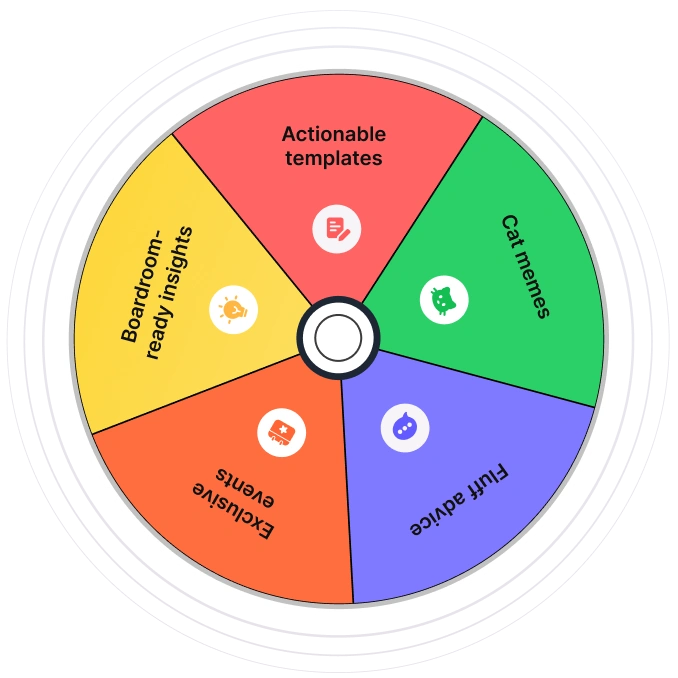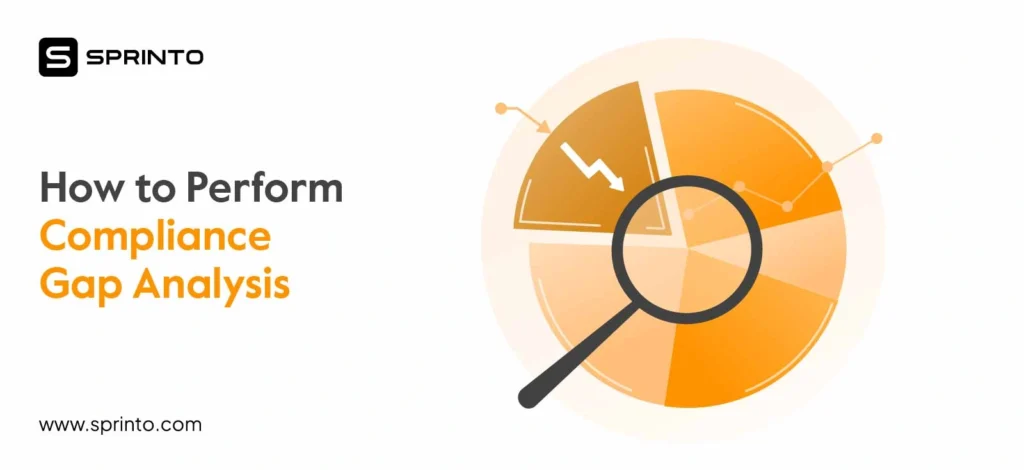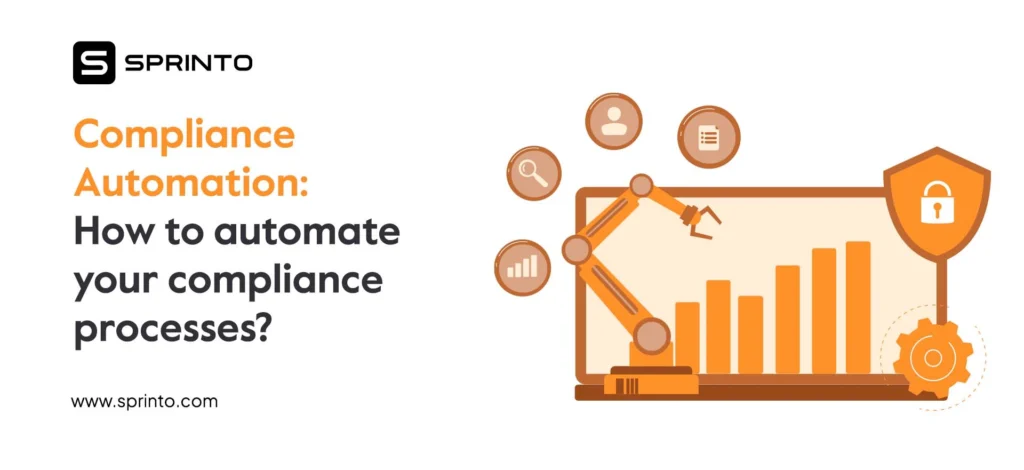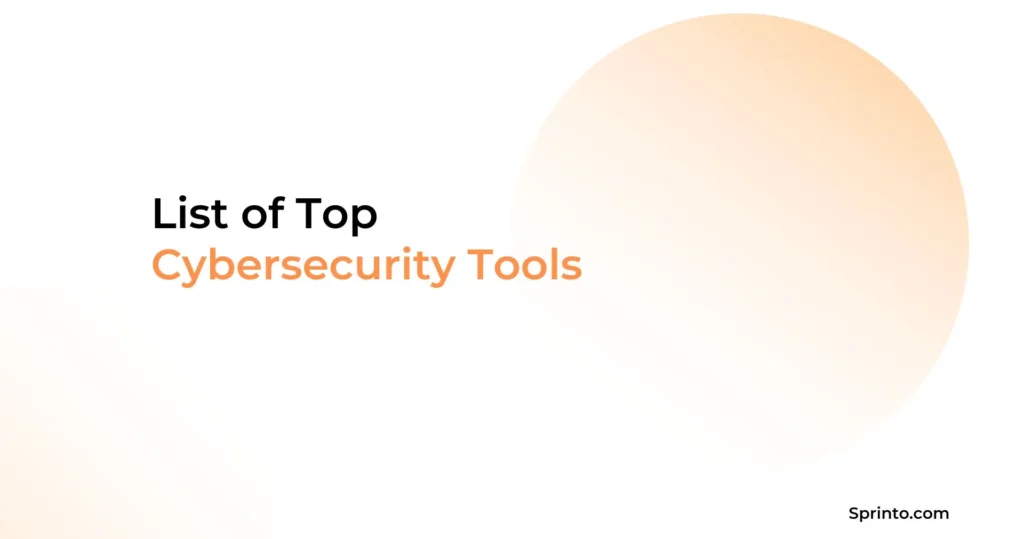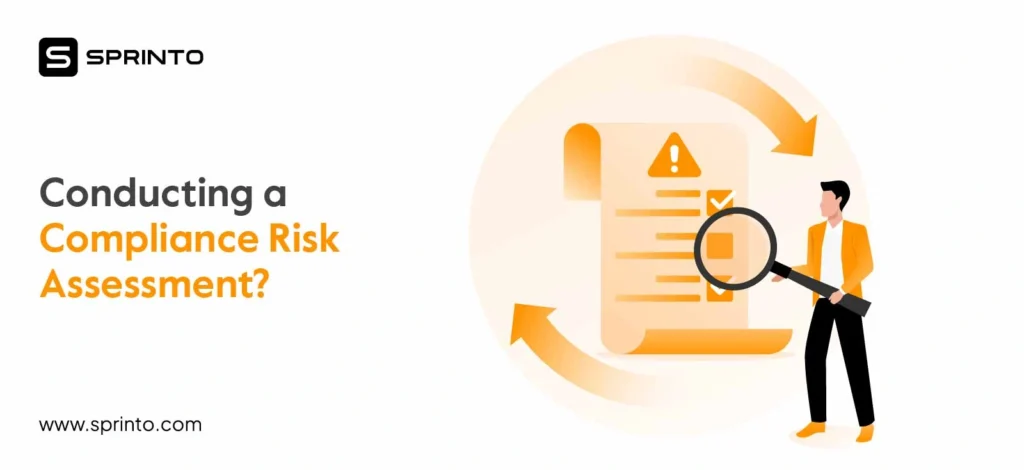The federal government spent over $17 billion on cloud services in 2024. But accessing this massive market requires more than a great product. It demands rigorous security validation. To achieve that, Cloud Service Providers (CSPs) looking to work with federal agencies must comply with the Federal Risk and Authorization Management Program (FedRAMP).
FedRAMP is a standardized approach to security assessment and authorization that ensures government data stays protected in cloud environments.
A FedRAMP audit tests how well your systems hold up under scrutiny, such as how strong your controls are, how reliable your audit trails are, and how prepared your teams are to meet security challenges over time.
Many FedRAMP compliance programs fall short because of the sheer volume of manual work it involves. The process also involves gathering information across multiple tools, and tracking everything. That creates delays, repeats fixes, and leads to confusion during audits.
In this guide, we’ll break down the FedRAMP audit process and help you understand what to expect, how to prepare, and what “audit-ready” looks like for a CSP.
- FedRAMP audits check if a cloud service meets federal security standards for handling government data.
- Becoming “audit-ready” requires CSPs to have their controls, logs, and compliance evidence organized and accurate at all times.
- FedRAMP audits are a one-time process. After authorization, CSPs are only required to perform continuous monitoring (ConMon) assessments.
What is a FedRAMP audit?
A FedRAMP audit is a comprehensive security evaluation where an independent, certified third-party assessment organization (3PAO) systematically examines a cloud service provider’s security controls, documentation, and operational practices to verify compliance with federal security standards and requirements
At this stage, everything the organization has built, such as policies, tech stack, access logs, and incident response controls, goes under the microscope.
The 3PAO reviews the system security plan (SSP), tests the security controls, and collects evidence across systems. They then compile their findings into a security assessment report (SAR), which is submitted for review.
A federal agency will evaluate the SAR, request clarifications, and flag gaps. If the organization meets the mark, it will issue the authority to operate (ATO). This will get the organization listed on the FedRAMP Marketplace, where agency buyers find compliant vendors.
Why FedRAMP audits matter for Cloud Service Providers
FedRAMP audits matter because they’re the only gateway to the federal cloud market. Without this authorization, CSPs have no path to federal contracts and no access to the FedRAMP Marketplace.
The audit also forces a full review of how security is designed, enforced, and monitored across the stack. It tests the quality of documentation, the reliability of controls, and the team’s ability to maintain evidence over time. All of these help identify weaknesses before they impact customers or regulators. They also lead to tighter coordination between engineering, security, and compliance.
Aside from that, the final output of the audit, the security assessment report, is a standardized, third-party validation that you can present to multiple federal buyers. This makes it easier for agencies to onboard the product, which in turn shortens sales cycles and makes a good case for long-term procurement.
Recent updates to the program have also simplified the audit process. Instead of selecting between a federal agency or the Joint Authorization Board (JAB) as paths of approval, FedRAMP now assigns a single “Authorized” designation to all CSPs that meet the requirements.
This makes it easier for buyers to assess your security posture and removes inconsistencies in how authorizations were perceived across the federal system. It also helps our team at Sprinto get you through the FedRAMP process with less friction.
We map controls to your existing systems, automate evidence collection, and make sure your documentation matches standards. This way, you get a live, audit-ready view of your compliance posture through the entire audit process.
Get compliant faster with automation
The FedRAMP audit process
The FedRAMP audit is the security assessment phase of FedRAMP authorization. This is when a third-party assessment organization independently tests your cloud system to check its compliance with FedRAMP’s control baselines. Here are the steps in the audit process:
1. Finalize security documentation
Before testing starts, cloud service providers have to complete a System Security Plan (SSP) and all associated appendices. This plan will mention your FedRAMP baseline (Low, Moderate, or High) and describe the system boundary, data flows, implemented controls, inheritance details, and residual risks. It will form the baseline for all testing activities.
2. Develop the Security Assessment Plan (SAP)
Next, you’ll work with your 3PAO to draft your security assessment plan. This document outlines the scope of assessment, testing methodology, tools to be used, and the assessment schedule. It will also clearly define the test cases for each control based on NIST SP 800-53 Rev. 4 or Rev. 5, depending on the baseline.
If you’re following a just-in-time approach, where each document is completed and submitted one at a time, the sponsoring agency will review and approve your SAP before the 3PAO begins testing. However, if you’re going to submit all deliverables together once finalized, you can take your time to improve the document.
3. Conduct a security assessment
At this stage, the 3PAO will execute the tests defined in the SAP and perform the following tasks:
- Validate the implementation of all required protocols
- Perform automated and manual vulnerability scans (per NIST SP 800-115)
- Conduct penetration testing (if required by the impact level or agency)
- Validate boundary protections, encryption methods (FIPS 140-2 validated modules), audit logging, incident response, etc.
The production system must remain frozen during this period; no code or configuration changes are allowed. Once evidence has been collected, it must be mapped back to each control and retained for FedRAMP review.
4. Prepare the Security Assessment Report (SAR)
After the audit, the 3PAO produces a Security Assessment Report (SAR). This report provides a summary of the system’s security posture, lists detailed findings about vulnerabilities and control weaknesses, and categorizes residual risks as High, Moderate, or Low.
The report also makes a formal recommendation on whether the system can be authorized and references deviation requests, like false positives and operational requirements, when needed. Once this report is complete, it is uploaded to the FedRAMP secure repository.
5. Submit the Plan of Action and Milestones (POA&M)
After the SAR is issued, the CSP will submit a plan of action and milestones (POA&M) that mention how and when each identified weakness will be addressed. This plan will respond to every audit finding with the following information:
- Severity level
- Planned remediation steps
- Responsible party
- Estimated completion date
The plan has to be realistic, time-bound, and accepted by the sponsoring agency as part of the risk decision process.
6. Conduct the SAR debrief
At this stage, the 3PAO and CSP present the SAR and POA&M to the federal agency in a formal debrief meeting. They will cover:
- 3PAO’s testing approach and residual risk summary
- CSP’s mitigation plan for each open item in the POA&M
- Any deviation requests or risks that require agency acceptance
- Any third-party services or inherited controls that have to be validated
This will ensure a shared understanding of residual risks, control gaps, deviation requests, and any required agency-specific risk acceptances.
7. Receive the Agency ATO
Once the agency has reviewed the SAR and POA&M, it may issue an ATO letter signed by the Authorizing Official (AO). After they’ve been issued the ATO, the CSP and 3PAO have to upload the full package to the secure repository.
FedRAMP will perform a quality review of this package to make sure the documentation supports the security posture of the CSP and a risk review to determine whether the system can be reused across federal agencies.
If the package is approved, the Cloud Service Offering (CSO) under review will receive the FedRAMP Authorized designation and be listed on the FedRAMP Marketplace.
Remove the guesswork from compliance operations
Preparing for a FedRAMP audit
Before a FedRAMP security assessment begins, you need to make sure your system, documentation, and internal processes are prepared for a formal 3PAO evaluation. This will require you to perform the following:
1. Perform an internal review
Internal reviews help you identify gaps in your security posture before you hand over your system for external scrutiny. Here’s what to do to make sure your system is ready:
- Perform a self-assessment using the FedRAMP Readiness Assessment Report (RAR) guidelines or the NIST SP 800-53A control assessment procedures. This will require you to walk through each applicable control in the FedRAMP baseline (Low, Moderate, or High) and check if it is implemented, documented, and testable.
- Go over inherited controls from your IaaS/PaaS provider to make sure they’re documented correctly.
- Check your deployment model classification (public, private, hybrid, or government-only cloud) based on NIST SP 800-145.
- Confirm your FedRAMP impact level using the FIPS 199 Categorization Template (Appendix K in the SSP) and NIST SP 800-60 Vol. 2 Rev. 1. Your categorization will affect the controls you’re going to implement and the risk appetite of your sponsoring agency.
At this stage, you should also document every gap you find and assign remediation deadlines to them. This reduces your audit burden in later steps.
2. Check audit trail readiness
Audit trails prove that security controls are active and working as intended, but they can’t be vague. FedRAMP assessor will expect you to provide detailed records of security-relevant events and evidence that they’ve been retained, reviewed, and protected.
Here’s what you’ll need to do:
- Confirm audit logging has been enabled across systems, applications, endpoints, and network devices.
- Make sure logs include event type, user ID, timestamp (with NTP sync), source IP, and outcome (success/failure).
- Centralize logs in a security information and event management software that helps with event correlation and alerts.
- Retain logs according to FedRAMP control AU-11, which requires a minimum of 365 days of searchable data and 90 days of hot storage.
- Configure automated alerting and log review processes for events like failed logins, privilege escalation, and configuration changes.
- Validate that access to logs is restricted and monitored in compliance with controls AU-9 and AC-6.
Your 3PAO will check that your logs are immutable and accessible. This means you should run mock exercises internally to verify that you can pull logs on demand.
3. Create system documentation
The bulk of the FedRAMP assessment looks at your documentation, not just how your system operates in practice.
This means every control has to be supported with evidence of implementation, assignment, and monitoring. From FedRAMP’s perspective, controls without proper documentation are considered non-existent.
Here’s what you need to do:
- Complete the system security plan and provide a full system description, boundary diagrams, data flow maps, security categorizations, and control implementation details for each requirement in your selected baseline.
- Prepare your configuration management plan, incident response plan, contingency plan, access control policy, Information System Contingency Plan (ISCP), inventory and asset management record, and rules of behavior for users.
- Confirm that version control and document history tracking are active for all FedRAMP-related materials.
- Document user roles, component inventories, interconnections, and encryption mechanisms (FIPS 140-2 validated).
- Review your documentation for inconsistencies, especially where descriptions of implementations don’t match actual system behavior.
What is a FedRAMP audit log and why is it critical?
A FedRAMP audit log is a time-stamped record of security-relevant events that’s created when your system applications, servers, databases, and network devices are accessed. It helps answer two questions:
- What happened in the system?
- Who did it and when?
FedRAMP requires you to have an audit log to remain accountable, detect unauthorized behavior, and ensure traceability of user and system actions. These logs are evaluated against specific security controls, especially those in the Audit and Accountability (AU) family.
Without complete, consistent, or accessible audit logs, you cannot prove that your controls are operating as expected. This means you’ll experience delays or maybe even a denial of authorization.
FedRAMP audit frequency
FedRAMP only requires a full security audit once during the initial authorization process. There is no need to repeat the full assessment every three years. Updates to OMB A-130 removed this federal requirement.
However, some federal agencies may include their own reauthorization timelines in the authorization to operate letter. In this case, CSPs have to follow these requirements.
What does “audit ready” mean in the FedRAMP context?
Being “audit-ready” means a cloud service provider has all the documentation, evidence, and processes in place to undergo a formal security assessment at any time. This includes having the following:
- Complete and accurate SSP
- Clearly defined security controls
- Accurate logs and monitoring data
It also means teams know where artifacts live, how controls are implemented, and what evidence supports them.
Streamline FedRAMP audit prep with Sprinto
FedRAMP audits ask for deep visibility across systems, detailed documentation, and proof that controls are in place and working. Each part of the process has to match federal expectations with zero gaps.
Sprinto helps you bring all those pieces into one place.
With pre-mapped controls, real-time monitoring, and templates that help you meet FedRAMP’s latest requirements, your team always knows what’s ready and what still needs work.
Sprinto also comes with integrated risk management and advanced training modules to help you improve audit readiness across teams. This makes it easier to prepare for (and stay ready between) assessments.
Already building toward FedRAMP compliance? Let Sprinto help you prepare for audits without having to guess which controls need attention.
Book a demo to see how Sprinto can help you ensure audit-ready compliance.
FAQs
Who Needs a FedRAMP Audit?
Any cloud service provider that processes, stores, or transmits federal data should complete a FedRAMP audit. This includes multi-tenant CSOs like IaaS, PaaS, or SaaS that are intended for use across federal agencies.
FedRAMP also applies to businesses planning to enter the federal market or looking to support agencies handling sensitive data through cloud services.
How Long Does It Take to Get FedRAMP Audited?
A FedRAMP audit can take between four and six months from start to finish. However, the timeline can stretch depending on the scope of the system, the number of findings during testing, and how quickly your team can respond with remediations.
What Happens if Your System Fails a FedRAMP Audit?
If your system does not meet FedRAMP requirements during an audit, you won’t receive an authority to operate letter.
Your 3PAO or federal agency will provide a report of all the gaps in your controls, and you can use this to remediate those issues.
How Does FedRAMP Differ From Other Compliance Frameworks Like SOC 2 or NIST?
FedRAMP applies only to cloud services used in the federal industry. In comparison, NIST is a framework that outlines how to secure information systems in general and isn’t tied to one sector. SOC 2 is a voluntary audit that checks how service organizations protect customer data based on five trust principles. While both SOC 2 and FedRAMP share overlapping requirements, FedRAMP comes with far more controls and is harder to complete.
Payal Wadhwa
Payal is your friendly neighborhood compliance whiz who is also ISC2 certified! She turns perplexing compliance lingo into actionable advice about keeping your digital business safe and savvy. When she isn’t saving virtual worlds, she’s penning down poetic musings or lighting up local open mics. Cyber savvy by day, poet by night!
Explore more
research & insights curated to help you earn a seat at the table.






